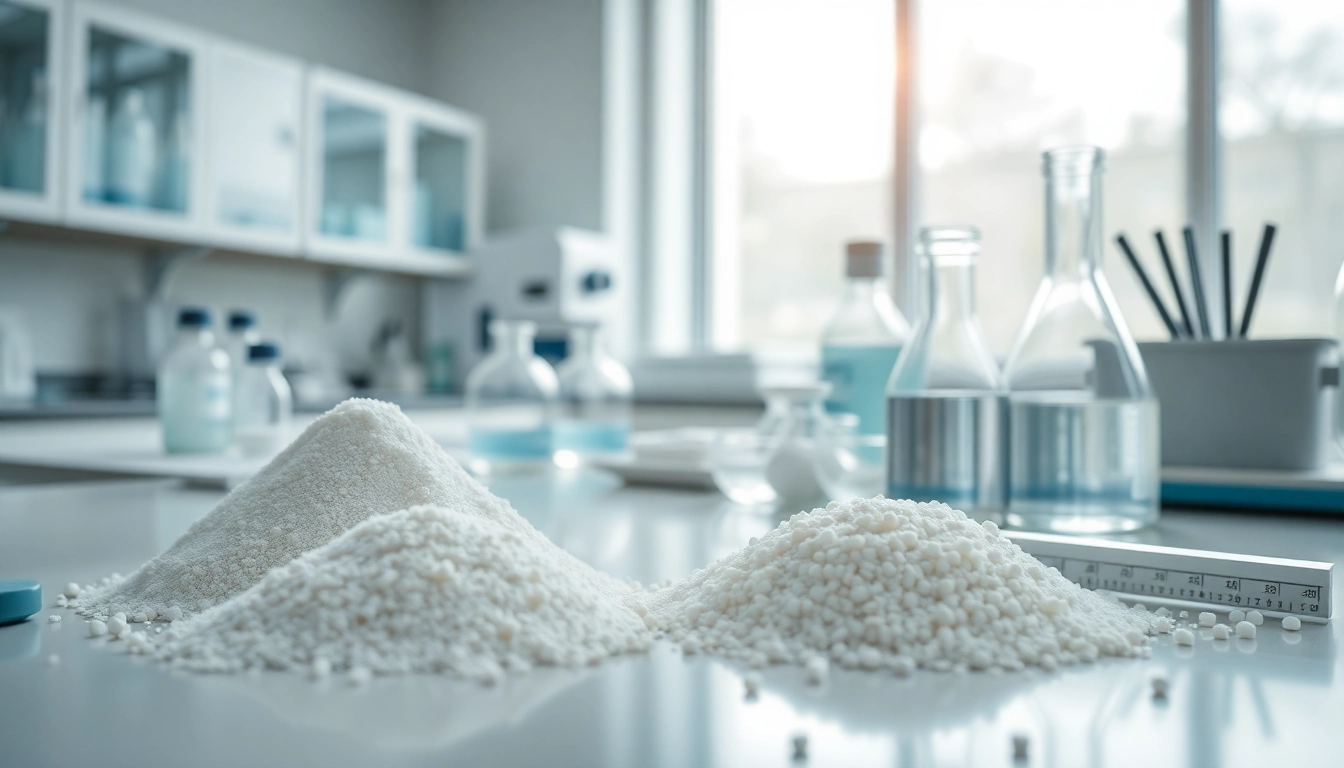Introduction to Cellulose Ether
Cellulose ether is a cellulose derivative that has gained considerable attention across various industries due to its unique properties and versatility. As a modified natural polymer, it offers remarkable functionality in a wide range of applications including food, pharmaceuticals, and construction. This article delves into the composition, types, applications, and advantages of Cellulose ether. We aim to provide insights that not only inform but also empower industries to optimize their processes using this remarkable compound.
What is Cellulose Ether?
Cellulose ether refers to a range of compounds created by chemically modifying cellulose – the most abundant organic polymer on Earth. The transformation involves substituting hydroxyl groups in the cellulose molecule with ether groups, which significantly alters its physical and chemical properties. The result is a water-soluble material that can function as a thickener, stabilizer, or film-former in various formulations, improving texture and performance.
History of Cellulose Ether Production
The history of Cellulose ether production dates back to the 19th century when chemists began to explore cellulose’s ability to be transformed chemically. The first commercial product based on Cellulose ether was introduced in the early 1900s, and since then, advances in production technology have led to a wide variety of cellulose derivatives. Each of these derivatives is tailored for specific applications, reflecting the evolving needs of industries and consumers.
Key Properties of Cellulose Ether
One of the hallmark features of Cellulose ether is its solubility in water, which can vary significantly based on its chemical structure and the substitution level of its hydroxyl groups. Additionally, it exhibits excellent rheological properties, allowing it to act as a thickener or stabilizer. Properties such as film formation, water retention, and its colloidal nature are crucial for its applications, enhancing the texture and stability of products in diverse sectors.
Types of Cellulose Ether
Several types of Cellulose ether exist, each with its unique characteristics and applications based on the degree and type of substitution of the hydroxyl groups in the cellulose polymer. Below we explore three primary types: methylcellulose, hydroxypropyl methylcellulose, and carboxymethylcellulose.
Methylcellulose and Its Applications
Methylcellulose is produced by the methylation of cellulose. It is notable for being soluble in cold or hot water, making it highly versatile in food products. It acts as a thickener, emulsifier, binder, and film-former, and it is commonly found in products like ice cream, salad dressings, and sauces. Additionally, methylcellulose is used in construction materials as an additive to improve workability and adhesive properties.
Hydroxypropyl Methylcellulose Explained
Hydroxypropyl methylcellulose (HPMC) is a semi-synthetic polymer derived from methylcellulose. Its unique end-use properties arise from the hydroxypropyl groups, which enhance its solubility in water. HPMC is extensively used in the pharmaceutical industry as a binder and film coating agent, ensuring drug stability and controlled release. Moreover, it finds applications in construction as a thickening agent in adhesives and mortars.
Carboxymethylcellulose Overview
Carboxymethylcellulose (CMC) is another significant type of cellulose ether, where carboxymethyl groups are introduced into the cellulose structure. This modification results in a highly soluble compound in water, particularly in acidic environments. CMC’s applications span from thickeners in food products to stabilizers in paint and cosmetics. Its ability to improve the viscosity and texture of formulations significantly enhances product performance.
Applications of Cellulose Ether
The versatility of Cellulose ether enables it to serve myriad functions across various industries, contributing to product quality, safety, and consumer satisfaction. Here we explore its applications in three major sectors: food, construction, and pharmaceuticals.
Role in Food Industry
In the food industry, Cellulose ether plays a crucial role as a thickener, stabilizer, and fat replacer, particularly in low-fat products. It enhances texture and mouthfeel, facilitating moisture retention and shelf-life extension. For instance, methylcellulose is utilized in low-calorie ice creams and sauces to emulate the creamy texture of full-fat alternatives.
Uses in Construction Materials
In construction, Cellulose ether acts as a critical additive in mortar, concrete, and tile adhesives. Its thickening properties help maintain workability and prevent segregation of components, ensuring consistency in application. Moreover, Cellulose ether enhances adhesion and water retention, reducing crack formation and improving the longevity of construction materials.
Cellulose Ether in Pharmaceuticals
The pharmaceutical sector utilizes Cellulose ether for its binding and film-forming capabilities. HPMC serves as a tablet binder, controlling the release of active ingredients, thereby influencing the pharmacokinetics of medications. Additionally, its use as a coating agent supports drug stability, making it instrumental in extended-release formulations.
Benefits of Using Cellulose Ether
Utilizing Cellulose ether in various applications yields numerous benefits for manufacturers and consumers alike. Below, we explore the critical advantages that underscore its widespread adoption.
Enhancing Product Performance
Cellulose ether significantly enhances product performance by modifying texture, viscosity, and stability. This enhancement translates into superior quality products that meet consumer expectations for taste, feel, and effectiveness in applications ranging from food to pharmaceuticals.
Improving Texture and Stability
By incorporating Cellulose ether, businesses can achieve desired textural profiles that are critical for market competitiveness. For example, in food products, the perfect balance of viscosity and mouthfeel can lead to boosted consumer acceptance. Furthermore, its stabilizing properties help prolong product shelf life, ensuring consumer safety and product retention of quality over time.
Environmental Benefits of Cellulose Ether
Cellulose ether is derived from a renewable resource, making it an environmentally friendly option in formulations. As industries shift towards sustainable practices, Cellulose ether stands out as a biodegradable alternative to synthetic polymers. Its lower environmental impact and wide usability align with the current trends in eco-conscious manufacturing.
Best Practices for Handling Cellulose Ether
To maximize the benefits of Cellulose ether, adhering to best practices for handling it is crucial. Below are recommendations regarding storage, safety, and usage.
Storage Recommendations
Proper storage conditions for Cellulose ether include a cool, dry place away from direct sunlight. It should be kept in tightly sealed containers to prevent moisture absorption, as this can affect its solubility and performance. Regular checks on the condition of stored Cellulose ether can help ensure its effectiveness for applications.
Safety Guidelines
While Cellulose ether is generally considered safe, handling guidelines should still be observed to minimize risks. Appropriate personal protective equipment (PPE) such as gloves and masks may be necessary to limit inhalation or skin contact. Ensuring good ventilation in the workplace can also help mitigate any potential exposure risks.
Measuring and Mixing Techniques
Accurate measuring and mixing of Cellulose ether are key to achieving the desired properties in formulations. It is advisable to use precision scales and measuring equipment to obtain accurate quantities. Ensure thorough mixing at the correct temperature conditions to promote uniform dispersion throughout the mixture, avoiding clumping or lumping that can compromise product performance.



